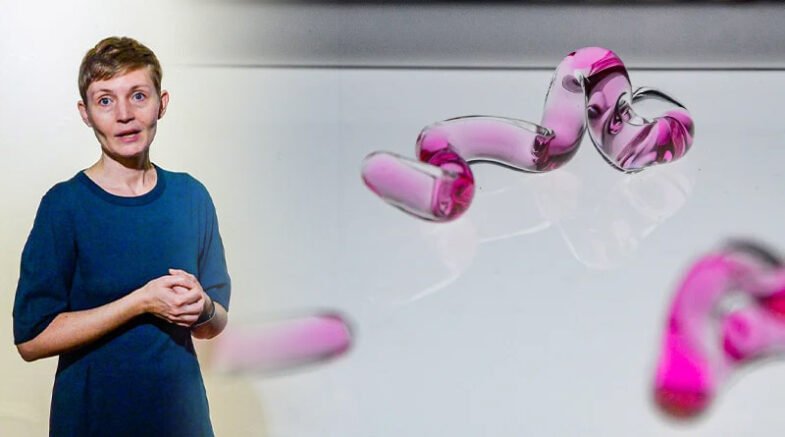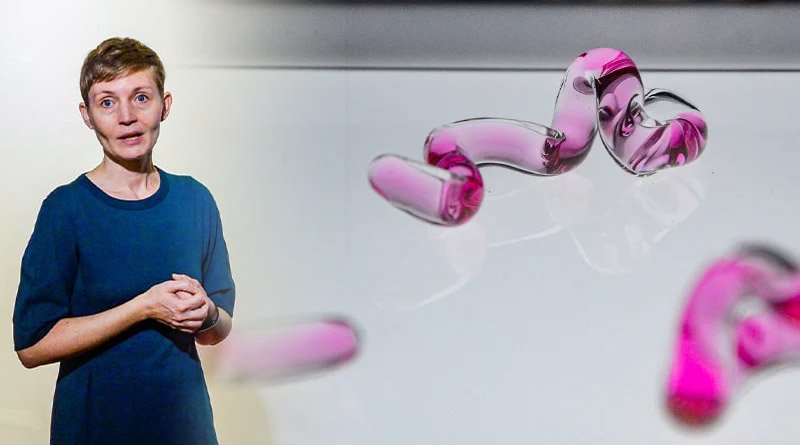Four of Heather Dewey’s works, each of which delicately balances the worlds of art and science, are currently displayed in the gallery.

Art is a broad term that can be used to express creativity and imagination, and the current exhibition at Weiling Gallery in Kuala Lumpur is proof of this. It will challenge the way you view art. It’s safe to say that “Closer Than Your Family” is the most intriguing art exhibit you’ll ever visit.
Heather Dewey-First Hagborg’s solo exhibition in Malaysia is a little unusual. Four of Heather’s works, each of which delicately balances the worlds of art and science, are currently displayed in the gallery.
The first piece to be exhibited is the art installation “Love Sick: The Transfection,” which uses a real engineered virus. It’s time to start the conspiracies. But it is true, I guess. For this piece of art, Dewey-Hagborg collaborated with a lab to develop a virus that actually boosts oxytocin production in the human body.
The hormone oxytocin is responsible for feelings of love and kinship, and this artwork is intended to make a statement against the widespread intolerance and hatred in the world.
“Lovesick” includes glowing vials of the virus in addition to printed images of the virus infecting cells; don’t worry, they are purposefully deactivated. As unsettling as it is, it also serves as a reminder that viruses can now be produced by humans.
The following piece of art, “Watson’s Ghost,” depicts James Watson, the man who claimed credit for discovering DNA, rather than Sherlock Holmes’ illustrious sidekick.
This piece of art includes two 3D-printed human faces as well as a digital screen that displays up to 200 different portraits of individuals.
The twist is that Watson’s DNA was used to create all of these portraits, demonstrating the wide range of genetic variations that can exist. Dewey-Hagborg claimed that Watson had rather unsettling beliefs regarding intelligence, race, sex, ethnicity, and how to “breed” the ideal human.
Thus, by reminding viewers that genetics are only a small part of what makes people who they are, this artwork makes a statement in opposition to Watson’s theories. “Hybrid: An Interspecies Opera,” the last exhibit, connects to another piece of art called “Future Pigs.”
Three digital screens are used in “Future Pigs” to show viewers how pigs might change in the future. Pigs bred to have exotic animal coats, such as a zebra’s stripes or a leopard‘s spots, are displayed on one screen. The pig in the other picture is fairly typical, but it has been fattened to increase the amount of edible parts.
The most unsettling image is probably on the final screen, which features a pig with human-like features. It’s probably a good reminder that pigs and people share a lot of genetic makeup. Speaking of genetic similarity, the musical documentary “Hybrid” explores this idea by focusing on the bond between people and pigs.
Did you know that scientists are already exploring ways to create gene-edited pigs that will be able to donate organs to humans? That’s apparently a thing right now, and you might even profit from it in the future.
The musical lyrics in the documentary may surprise you because they are actually the actual words of the scientists who are researching the subject. One might wonder if Dewey-Hagborg is more of a scientist than an artist, given how scientifically oriented her works are.
She acknowledged that she saw herself as the latter when she spoke with FMT. “I was already fusing art and science at a young age. These two things together have always been something I wanted to do.
She said, “I was really interested in the concept of conceptual art, the notion that ideas themselves can be art. “I liked how it involved my intellectual side as well.”
She revealed some of the backstories for her works, with “Lovesick” seemingly reflecting the current political scene. She claims that the 2016 presidential election and the Brexit vote motivated her to inquire with a lab director about the possibility of creating a virus that would increase human compassion.
“People had turned so viciously against one another, and I was considering a biotechnological solution to unite people,” the author said.
She does say that the virus is incredibly non-contagious, so don’t be alarmed. We’re not experiencing a happy virus pandemic, she joked. Her works at art Exhibition in Kuala Lumpur are ultimately intended to provoke thought and discussion about how expansive modern science can be, for better or worse.
